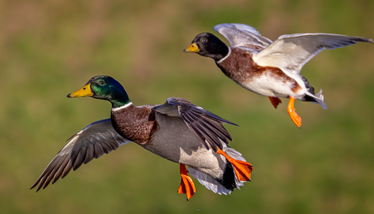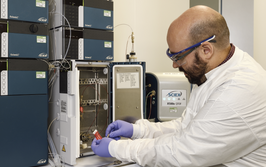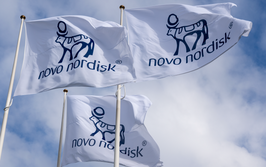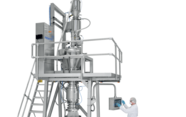Understanding the H5N1 Threat
With new cases of avian influenza appearing, what does this mean for global health and what are drug developers doing about it?
Stephanie Vine | | 4 min read | News

Avian influenza has been making waves in media headlines. At the start of January, the first human death in the US from H5N1 was reported. US authorities have also detected the first outbreak of the H5N9 strain in ducks in California, while in the UK a case of H5N1 was detected in a human for the first time since 2022.
Concerns have been growing since the virus was identified in cows in the US in March 2024. The more it mutates and affects new species, the more likely it is that it will gain the ability to transmit between humans. Human cases of bird flu have so far been linked to transmission directly from birds. Since the start of 2024, there have been 66 confirmed cases of H5N1 in humans in the US. Outside of the US, WHO has reported more than 950 cases of H5N1 in humans. Around 50 percent of the people infected died.
If the virus mutates and becomes able to transmit between humans, it could cause a global health crisis. The global population will have little to no immunity against an avian flu because most humans have never encountered it before. As we saw in the COVID-19 pandemic, viruses can travel fast in the modern world of international travel.
Although the mutations in the virus are causing panic and scaremongering, many scientists emphasize that the imminent danger is low. Ed Hutchinson, Senior Lecturer at MRC-University of Glasgow Centre for Virus Research, explains, “Because viruses are closely adapted to particular host species, it’s really hard for a bird flu virus to infect a human. This is why, despite the very high levels of H5N1 currently infecting wild and farmed birds, human infections with this virus are extremely rare, and normally only occur in people who have close contact with birds. Onward human-to-human transmission of a bird virus is even harder, and is exceptionally uncommon.”
However, experiences will differ between countries – as will the strains. The strain in the UK, for example, is different to the one circulating in cattle in the US. Hutchinson adds, “In South America H5N1 is causing devastating outbreaks in seals and sea-lions, while in the USA it has managed to adapt to dairy cattle and is being shed in their milk – something which has not yet happened in the UK. Different strains of the virus are also circulating in birds in different parts of the world, and it is possible that these strains might have different properties. In the USA and Canada there have been two recent cases of humans getting severely ill after catching H5N1 from birds.”
Fighting the virus
Scientists are calling for tests, vaccines, and drugs that can control the spread of the virus in poultry and livestock, as well as close surveillance. Efforts are also ongoing across the industry to develop pandemic influenza vaccines and therapeutics.
One of the most high profile companies active in the pandemic vaccine space is Moderna, which has received $590 million in funding from the US Department of Health and Human Services for the development of mRNA-based pandemic influenza vaccines. A phase I/II study was started in 2023 to generate safety and immunogenicity data for pandemic vaccine mRNA-1018. The study results will be shared soon and Moderna is now preparing for phase III.
Meanwhile, at an earlier stage of development, InvisiShield Technologies has announced that it is accelerating development of its H5N1/pan-influenza program. The company is working on intranasal antibody candidates for influenza, SARS-CoV-2 and RSV. Preclinical studies have demonstrated potent efficacy against H5N1.
Another company, Arcturus Therapeutics, is moving into a phase I clinical trial of its self-amplifying mRNA vaccine candidate for H5N1. The first trial participant was dosed in December 2024, with the work being funded by BARDA. You can read more about self-amplifying mRNA in this article from Arcturus CEO Joseph Payne.
BARDA is also funding other projects related to pandemic preparedness. The agency recently selected four Concept Stage winners for its Patch Forward Prize, with a focus on microneedle technologies for RNA vaccines for COVID-19, seasonal influenza and pandemic influenza. Each winner (Micron Biomedical partnered with Zipcode Bio; LTS Lohmann partnered with BioNet; Vaxxas partnered with BASE; and PopVax partnered with LTS Lohmann) will receive $2 million to help advance their technology. BARDA will also be launching the preclinical stage of the Patch Forward Prize later this year.
Is your company working on therapeutics or vaccines that could be pivoted towards H5N1? Let me know about your research: [email protected].
For more news and views on the pharma industry, consider subscribing.
Related articles
Ditching the Egg: An Alien Concept
When it comes to influenza, chicken egg-based vaccines have achieved much, but emerging approaches are ready to fly the coop – and they might just be something to shout about. Read the article
Cow Flu Caution
Study highlights underdiagnosed H5N1 infections in US dairy workers. Read the article
One World, OneHealth
Paul Anantharajah Tambyah tells us why public health scientists of the animal, human, and environmental worlds should unite to fight infectious disease. Read the article

Making great scientific magazines isn’t just about delivering knowledge and high quality content; it’s also about packaging these in the right words to ensure that someone is truly inspired by a topic. My passion is ensuring that our authors’ expertise is presented as a seamless and enjoyable reading experience, whether in print, in digital or on social media. I’ve spent fourteen years writing and editing features for scientific and manufacturing publications, and in making this content engaging and accessible without sacrificing its scientific integrity. There is nothing better than a magazine with great content that feels great to read.



















